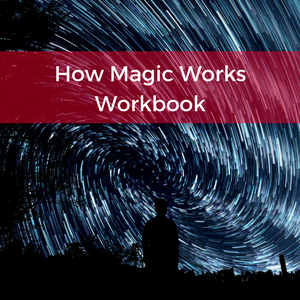I’ve recently started reading The Sacred Alignments and Sigils by Robert Podgurski (affiliate link) and he shares the following: “The way to illumination has long been described as a path, route, or journey, along with other numerous allusions to the plotting of a course…the path is an emblem that is vivified as students engage with their quest. The going makes the path: it’s both agent and action as well as facilitating magickal velocity bringing about union with the godhead or the One and All.” I thought this was an interesting passage and it got me thinking about my own use of the word path and what it describes in relationship to spiritual work.
It seems to me that path is both an ontological and cosmological term in context to magical work and perhaps spiritual work in general. Yet the path is also a descriptor of the map that we’re working with, and a route through that map. The path becomes the territory by which we understand the map. Wordplay aside, the path becomes the process through which we depict and explore the spiritual work we’re doing and put it into context within our lives. I use the word path because it is generally a relatable term and yet it is a highly personal term as well. My path isn’t necessarily your path, and yet can still be relatable.
What I’ve noticed in general is there is a tendency to map out the spiritual journey and work that a person does. I suppose the advantage of this tendency is that it provides a way for a person to make sense of and make meaning of the spiritual work in relationship to their lives. This is an essential aspect of spiritual work: We seek to meaning and sense of it so we can apply it in a way that actually changes our lives.
Maps, metaphorically, become systems and processes that we use to create change in our lives. They describe where the dragons are but they also describe how the world, the cosmos, etc., should be…while the path describes how the practitioner gets there. The practitioner is describing the path and creating the map as they go through the territory. The territory becomes known through the path and the map, and yet the challenge is to continually wander into the unknown and learn. We don’t want to rely upon the path so much that we don’t discover the journey.
I’ll likely never stop using the word path in my lexicon, or other words that are similar. It’s a convenient word that describes the process a person is undergoing. Nonetheless its important to also recognize the limitations of a given word. The map isn’t the territory and the path isn’t necessarily the full experience we think it is. The ontological and cosmological implications of your work may never be fully describable because some experiences can’t be fully put into words. And we’ll continue to try because that is part of how we make meaning out of experiences and turn them into realities we can make sense of and live in, in a way that is truly essential and empowering.

